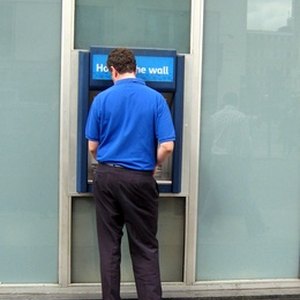
Thanks to the increasing number of mobile banking and personal finance apps, it’s easier than ever to make deposits into and withdrawals from your bank accounts. Whether you have a savings or checking account at a bank or credit union, you can make quick deposits at brick-and-mortar locations, or by using your computer or mobile phone.
Doing In-Person Deposits
At your bank or credit union branch locations, you can make deposits inside with a teller or outside using a dropbox or ATM. You don’t have to get out of your car when you visit your bank or credit union and want to make a deposit or withdrawal – you can use a dropbox or ATM.
If you make a counter deposit or dropbox deposit, you’ll need a deposit slip. These pieces of paper require that you write down your name and account number, then list the checks you’re depositing and the amount of cash.
At the counter, a teller might fill out a slip for you after you present your ID, and you can get cash back. If you use a deposit box, you’ll put your money and deposit slip into an envelope and seal the envelope. Drop boxes or night depository boxes don’t provide you with a receipt, so if your envelope is lost or stolen, you’ll probably lose your cash.
Using an ATM, you’ll enter your card, then your PIN. You can deposit cash without using an envelope, or one or more checks. Follow the prompts after you insert your card, which usually consists of selecting, “Deposit,” then following the prompts. You can ask for a paper or digital receipt.
Read More: Benefits & Risks of Certificates of Deposit
Using an Online Account
When you open a checking or savings account, you’ll usually be able to register for an online account. These accounts let you view your balance, check recent transactions, make transfers, pay bills and make deposits.
You will need to create a username and password and provide the site with information such as your name, the address and phone connected to your account, your account number and your Social Security number. You can’t make deposits using these accounts, but you can make transfers and payments.
Using a Digital App
Many banks and credit unions now offer digital apps that let you bank by phone. They offer most, if not all, of the features of an online account, but let you deposit checks using your phone’s camera.
To do this, log in to your account and follow the prompts for depositing a check. You will need to take a picture of the front and back of your check so the bank can get your routing and account numbers off the check, see that you’ve endorsed the back of the check and get the amount. Bank of America offers a video tutorial that shows the check-depositing steps used by many banks.
Withdrawals vs. Transfers vs. Payments
Technically, any time you take money out of your account, you can consider that a withdrawal. However, most people use “withdrawal” to describe personal transactions (even if you’ll be using the money for a business transaction later). You can transfer money from your account to someone else’s using an ACH transaction or wire transfer.
ACH transactions are usually free or low-cost but might take two or more days to complete. Wire transfers are bank-to-bank transactions with no third-party system involved, but provide less opportunity to challenge a problem with the transaction. You can also transfer money from your account to someone else’s who uses the same bank as you. Just follow the prompts for making a transfer.
You can make payments from your account by using your online or digital app account to complete one-time payments to friends or businesses, or set up auto payments. For example, if you want to have your minimum payment applied to your credit card account each month by the due date, you’ll log in to your online credit card account and set that up, using your bank account information.
Using Third-Party Apps
Apps like Zelle, Venmo, Cash App, Google Pay and PayPal let you make payments and withdrawals tied to your credit card or bank account. You’ll need to download the app or set up an account online, then enter your credit card or bank information. Many apps and PayPal let you make most personal transactions for free. Some charge a fee but offer more options.
References
Tips
- Always keep your ATM and bank receipts as proof of your deposits and withdrawals in case there are any teller or machine errors that need to be verified.
Warnings
- Do not keep entering your PIN at an ATM if you cannot remember your number. After three to four tries, the machine automatically keeps the card as a theft-prevention safeguard.
Writer Bio
Steve Milano has written more than 1,000 pieces of personal finance and frugal living articles for dozens of websites, including Motley Fool, Zacks, Bankrate, Quickbooks, SmartyCents, Knew Money, Don't Waste Your Money and Credit Card Ideas, as well as his own websites.

